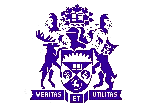|
|
COURSE STRUCTURE
Course Outlines
At the beginning of each course, Faculties, Departments, Schools or Programs (hereafter called "Academic Units") must inform students of the following information to allow students to make informed decisions on their course selection and the scheduling of their studies. - A written outline of each course offered by the Academic Unit, containing a general description of course content. If the course is taught by more than one instructor, the name of the person responsible for the course [course coordinator] shall be included in the outline.
- A statement of what is expected of the student by way of preparation, tests, exercises, essays,laboratory reports, etc. (hereafter called "assignments").
- An indication that plagiarism is a serious Scholastic Offence.
NOTE: The following statement on Plagiarism should be added to course outlines: "Plagiarism: Students must write their essays and assignments in their own words. Whenever students take an idea, or a passage from another author, they must acknowledge their debt both by using quotation marks where appropriate and by proper referencing such as footnotes or citations. Plagiarism is a major academic offence (see Scholastic Offence Policy in the Western Academic Calendar)." - A statement of the methods by which student performance will be evaluated and of the relative weight of assignments.
NOTE: Course instructors who wish to change the evaluation procedure shown in the course outline circulated to students at the beginning of the course, must receive prior approval to do so from the dean of the faculty concerned. - An exact timetable of assignments. When exact dates cannot be supplied, a tentative or rough schedule should be issued, with an exact schedule to follow as soon as possible. This regulation does not preclude the administration of surprise assignments and quizzes, as long as the total number, approximate frequency, and the value of such assignments is specified in the course outline.
- If written work will be assigned in the course, and plagiarism-checking software might be used, a statement to this effect must be included in the course outline.
NOTE: The following statement must be added to course outlines if plagiarism-checking software might be used: "All required papers may be subject to submission for textual similarity review to the commercial plagiarism detection software under license to the University for the detection of plagiarism. All papers submitted will be included as source documents in the reference database for the purpose of detecting plagiarism of papers subsequently submitted to the system. Use of the service is subject to the licensing agreement, currently between The University of Western Ontario and Turnitin.com." - If computer-marked multiple-choice tests and/or exams will be given, and software might be used to check for unusual coincidences in answer patterns that may indicate cheating, a statement to this effect must be included in the course outline.
NOTE: The following statement must be added to course outlines if software may be used to check multiple choice tests and/or exams: "Computer-marked multiple-choice tests and/or exams may be subject to submission for similarity review by software that will check for unusual coincidences in answer patterns that may indicate cheating." - If applicable, a list of the prerequisites for the course and a notation regarding the Senate regulation with respect to the studentís responsibility for ensuring that course prerequisites have been successfully completed or special permission from the Dean obtained.
NOTE: If there are prerequisites for a course, they should be listed on the course outline and the following statement should be added: "Unless you have either the requisites for this course or written special permission from your Dean to enroll in it, you will be removed from this course and it will be deleted from your record. This decision may not be appealed. You will receive no adjustment to your fees in the event that you are dropped from a course for failing to have the necessary prerequisites."
Note: The policy of the University is that, when a course instructor wishes to change the evaluation procedure, as outlined in his or her course outline at the beginning of the year, prior approval must be obtained from the Dean of the Faculty concerned.
Methods of Evaluation
At the beginning of each course, the Department will provide a statement of the methods of evaluation that will be used in assessing performance. Wherever possible, departments (or faculties) will ensure that final grades in their courses are derived largely from documented evidence demonstrating academic achievement, i.e., written or practical examinations, essays, reports, problem assignments. This does not preclude the use of oral examinations as part of the evaluation process. Each student granted admission to Western must be proficient in spoken and written English. Students must demonstrate the ability to write clearly and correctly. Work presented in English in any subject, at any level, which shows a lack of proficiency in English and is therefore unacceptable for academic credit, will either be failed or, at the discretion of the instructor, be returned to the student for revision to a literate level. To foster competence in the use of the English language within their own discipline, all instructors will take proficiency in English into account in the assignment of grades.
Attendance
Any student who, in the opinion of the instructor, is absent too frequently from class or laboratory periods in any course, will be reported to the Dean (after due warning has been given). On the recommendation of the Department concerned, and with the permission of the Dean, the student will be debarred from taking the regular examination in the course.
|
|

